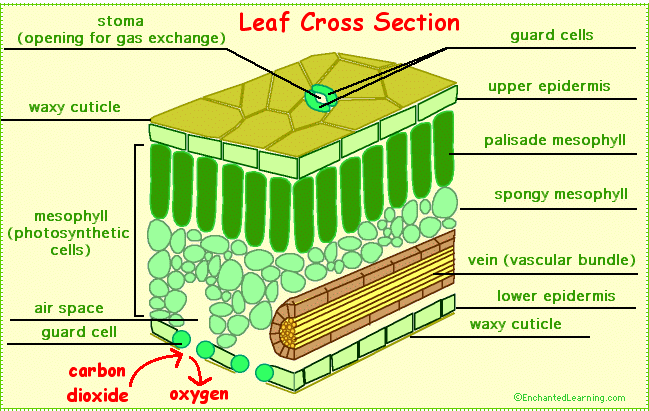Introduction
The mesophyll cells
Stomata
Waxy cuticle
Spongy mesophyll
Vascular bundle
Roots
Osmosis
Transpiration
Introduction
Like insects, plants must meet the opposing demands of water retention and gas exchange. The site of photosynthesis in plants, as well as the gas exchange site, is the leaf. This is what a section through a leaf looks like:

The large surface area of most leaves maximises photosynthesis, while the tightly packed palisade mesophyll cells contain chlorophyll to carry out photosynthesis to meet the plant’s energy needs.
The mesophyll cells
The mesophyll cells (more specifically, the spongy mesophyll) are surrounded by quite a lot of empty space for air to mingle around, providing plenty of surface area for gas exchange by diffusion. They are tightly packed and perform photosynthesis.
Stomata
Air with its carbon dioxide (necessary for photosynthesis) enters the leaf through the stomata. Stomata are holes on the leaf surface, made by the guard cells. They can open and close depending on environmental factors such as humidity, temperature and wind. This controls the amount of water loss. Oxygen, the byproduct of photosynthesis, also leaves the leaf through the stomata.
Waxy cuticle
The waxy cuticle is waterproof and protects the leaf from water loss, alongside the upper epidermis. The lower epidermis and its respective waxy cuticle serve the same role…
